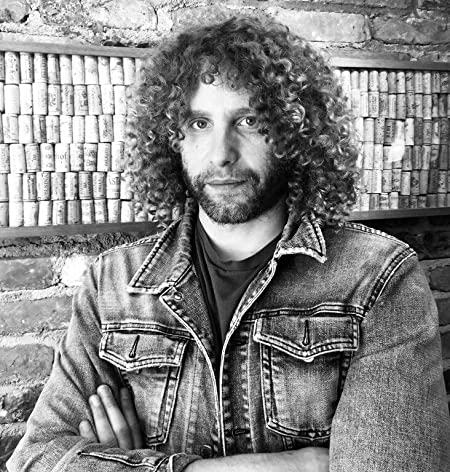Sean Lennon and Les Claypool’s Meeting of Oddball Minds is a “Definite Creative Chemistry”
The Claypool Lennon Delirium duo discuss their unique artistic bond and unusual recording arrangement.

Back in 2015, Sean Lennon’s band the Ghost of a Saber Tooth Tiger was the opening act on a tour co-headlined by Primus and Dinosaur Jr. Which is how Lennon ended up in an impromptu jam session with Primus bassist and lead vocalist Les Claypool one night before a show.
“We were playing on acoustics in the back of Les’s tour bus, 10 or 15 minutes before one of us was supposed to go onstage,” Lennon recalls. “And we came up with a bunch of things really fast. I remember Les being like, ‘Yeah, I noticed that you were kind of writing a song as we jammed, as opposed to just noodling.’ I think he liked that.”
“He was playing things that I wasn’t expecting, and that always intrigues me when I play with someone,” Claypool adds. “So I could tell right away that we had an interesting dynamic together. And I also liked the fact that Sean sometimes has odd approaches to what he does.” He laughs. “Because as you may know from my work, I’m a little off-center, too.”
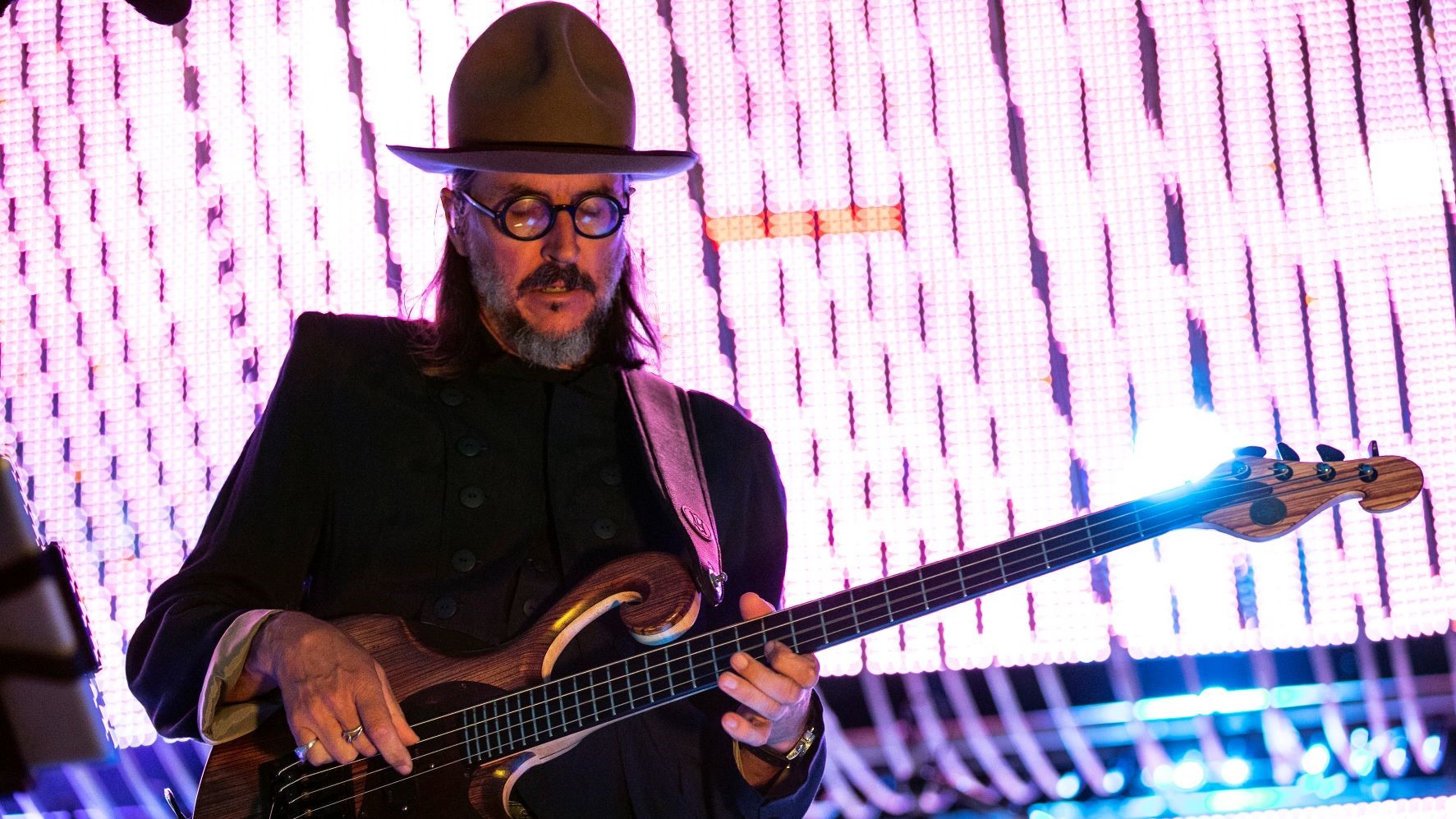
“Off-center,” of course, doesn’t even begin to describe the supreme oddness of Claypool and Lennon’s individual artistic output. As the frontman and main songwriter for Primus, the former has spent the past three decades or so crafting some of the knottiest, most dizzyingly complex and bizarre bass lines heard in modern music, and then grafting them to similarly wacko punk-funk-prog-rock creations with titles like “Wynona’s Big Brown Beaver” and “Shake Hands With Beef.”
As for Lennon, he’s a multi-instrumentalist with a ridiculously long résumé. In addition to his solo and band pursuits, he’s collaborated with artists in pop, rock, metal, avant-garde, hip-hop, psychedelia, folk and other genres – and that’s in addition to his work scoring films, producing records, acting and more. (He is also, of course, the offspring of John Lennon and Yoko Ono.) Put these two off-center individuals together in a room – or the back of a tour bus, as it were – and the result is, as Lennon says, “definite creative chemistry.”
The outcome of that chemistry is the Claypool Lennon Delirium, a project that serves as a conduit for the two artists to explore the outermost reaches of their shared musical sensibilities. The duo issued their debut album, Monolith of Phobos, in 2016, and followed it up in 2017 with the EP Lime and Limpid Green, which featured covers of songs from Syd Barrett–era Pink Floyd, King Crimson, the Who and the late-’60s Japanese rock group Flower Travellin’ Band.
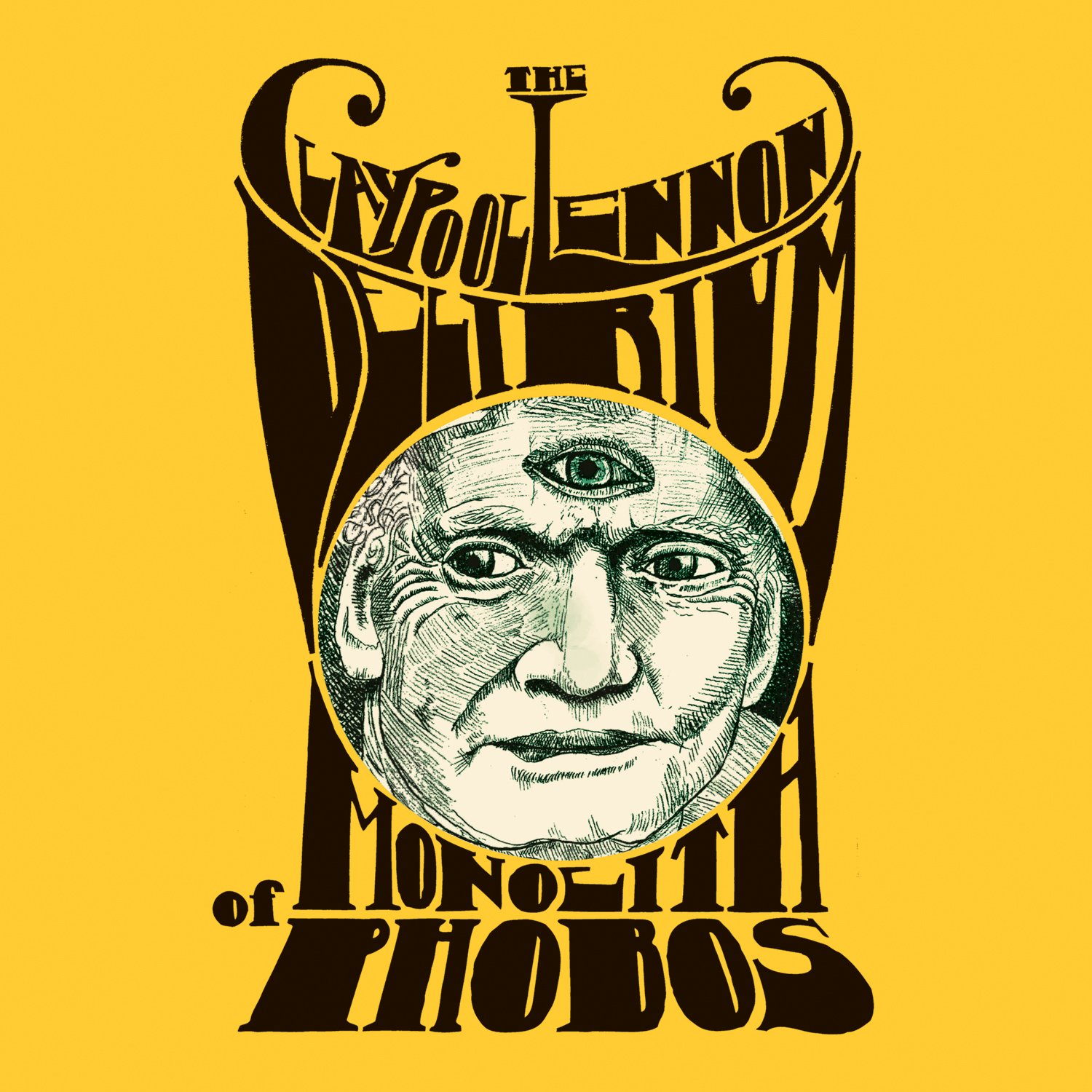
Their latest album, 2019’s South of Reality (ATO Records), finds Claypool and Lennon indulging their shared love of ‘60s and ’70s prog, psych and garage rock and melding it to jam-band-esque instrumental excursions, sweet-and-sour vocal harmonies and a lyric approach that is one part dark ruminations on the human condition and one part word-salad whimsy. All of which is to say South of Reality is, in one sense, exactly what we might expect from a meeting of these two oddball minds. At the same time, it sounds quite unlike anything else in popular music at this time.
Around the time of the album’s release, Claypool and Lennon sat down with Guitar Player to discuss their unique artistic bond, their unusual recording arrangement (which includes, on Lennon’s part at least, the use of a hefty number of sound-warping pedals) and what it is they like about working with one another. Central to this last point, Lennon says, is the fact that “we have an easy flow together.”
Which is, Claypool adds, an important, if not essential, aspect of the Delirium. “It has to be easy,” he says. “Because I don’t like pushing things. If things aren’t coming easy then I’ll go do something else – like catch a fish or something.”

The two of you pull from a lot of different sounds and styles in the Claypool Lennon Delirium. But what’s most pronounced in it are elements of late ’60s and early ’70s prog. What do you love about that music?
Sean Lennon: I think we love prog because it’s open-ended, and you can kind of do anything with it. It’s expansive. So it suits us, because it doesn’t seem strange to write a song in three sections about a rocket scientist [the South of Reality track “Blood and Rockets,” about American rocket engineer Jack Parsons]. It’s the theatrical version of rock and roll. [laughs] In prog, you’re allowed to write about “By-Tor and the Snow Dog,” or whatever. So it does kind of suit the Delirium in that way.
Les Claypool: I like it because it’s a rock that I haven’t really turned over on my own yet. And I tend to turn over a lot of rocks. I think Primus has always been pretty progressive, but in a different way. Primus is a heavier band. This to me is more reminiscent of Syd-era Floyd stuff and things that were going on around that time. And we come at it from different angles.
As a kid, I was a big fan of Rush and Yes and Utopia and Jethro Tull, whereas I think Sean was coming from a more psychedelic side of things. I remember, we were in his car one time going from his place in upstate New York back to Manhattan, and he was driving and I thought he was going to kill us because he was playing disc jockey the whole time, trying to get me to listen to all this psychedelic shit. So we like turning each other on to different things.
Les has a really good work ethic in a lot of ways. For example, he has this policy that everyone shows up for rehearsal the first day knowing, basically, everything.
Sean Lennon
What was the collaborative process like for South of Reality? Were you guys coming up with ideas independent of one another, or were you working on everything together?
Lennon: Both. Les has a really good work ethic in a lot of ways. For example, he has this policy that everyone shows up for rehearsal the first day knowing, basically, everything. [laughs] Like, they should know all the songs for a tour. Every part! As far as I know, a lot of people, and me especially, don’t mind rehearsing at rehearsal.
But he wants you to do your homework. It’s kind of like that for him when making a record, too. He does his homework before he gets there, and he shows up with a lot of ideas. But then there are other things that we came up with just by jamming together in the studio. Les is a really fast songwriter. Sometimes we would write a song a day for several days in a row. We’d just be cranking them out.
Sean, as a guitarist, is Les an intimidating guy to play with?
Lennon: He’s not intimidating in terms of his personality, but I’m definitely years behind him in terms of technical prowess and accomplishment on my instrument. The idea of holding my own in that way was a little bit daunting for me. But it pushed me to practice a little bit for… well, for pretty much the first time in my life. [laughs] Because I never really had a goal of becoming a guitar player specifically. I always considered the guitar to be a vehicle for me to write songs. So I wound up doing a little bit of practicing at first, and I still do. Whenever I’m going to go play with him, I practice some scales and exercises that I’ve found on YouTube or that different people have taught me. Because I don’t want to get tired out with Les, especially onstage. Sometimes the solos go on for quite some time.
Claypool: [laughs] Sean’s a pretty humble guy. He always worries about whether he’s up to snuff when we get ready to do some shows, and he wants to rehearse probably more than I would normally rehearse. But he’s a great guitarist. And a very intuitive player.

In addition to your musical connection, there seems to be a shared sensibility as far as the lyrics and artwork go. You guys both have a knack for conjuring dark but whimsical imagery.
Lennon: I think that’s one of the fun things about the character of the band. Because of Les’s personality, which is so strong and unique, there’s always a bit of humor mixed in as one of the ingredients. That definitely opens doors. It kind of gives you an excuse to take certain risks that you might not otherwise take. And that’s nice for me, because it makes me feel like I can write songs about imaginary things and surrealist things and funny stories and bizarre histories. Whereas sometimes, if I’m writing for myself, like under the title of Sean Ono Lennon or something, I wind up writing about things I feel or think. But in the Delirium I can write about sci-fi and children’s books and horror and comedy. The door is open to come up with fantastical story lines.
Claypool: I tend to bring this sort of twisted Americana element to everything I do, which is just me reflecting my background. But the great thing about Sean is, he’s like a scientist. He’s constantly delving into realms of science and lore and whatnot that most people just don’t delve into as deeply as he does. And, of course, when you have conversations with Sean and you talk about your childhood — or, I should say, my childhood — it’s quite a bit different than what his childhood was like. So you get two different perspectives and experiences of being on the planet.
I tend to bring this sort of twisted Americana element to everything I do, which is just me reflecting my background.
Les Claypool
What gear are you guys using on South of Reality?
Claypool: I’m using one of my Pachyderm basses, which I make with a buddy of mine that I went to high school with named Dan Maloney. For pedals I have a Line 6 [DL4] Delay and a Line 6 [DM4] Distortion, and I have a Boomerang [Phrase Sampler] and a [Fractal] AX8 [Amp Modeler and Multi-Effects Processor]. And I don’t use an amp: I have two API 7600 channel strips, and then I go into the console and into Pro Tools.
Sean, what were your main electric guitars on the record?
Lennon: My Delirium guitars are kind of flashy, in a funny way. I have two custom Bilt Zaftig guitars that are my main axes. One has a kind of greenish-teal glitter finish, and the other is all silver, with a mirror pickguard. I play them onstage and also in the studio, because Les and I tend to use the same gear for both. I have my same pedalboard setup in the studio, too. For my amp, I mostly used this little old Mesa/Boogie of Les’s. We put the Mesa/Boogie in this closet-shower contraption in the corner of the studio.

Claypool: You have to imagine, my whole house [Rancho Relaxo, in northern California, where Claypool records] is like a time capsule from the ’70s. It was built in 1978, so it’s very Boogie Nights. The bathroom in the studio is all brown – even the toilet. So the amp is shoved into this little brown shower, and we mic it up, throw some pads around it, shut the door and away we go.
Lennon: Once we get the amp sounding really nice, we don’t really think about it again. From there, any changes in the guitar sound come mostly from my pedalboard. We also don’t have any assistant engineer or anything. It’s just Les running Pro Tools and the API board.
So it’s just the two of you in the studio?
Lennon: Yeah. It’s literally only the two of us.
Who’s playing drums on the record?
Lennon: I am. Though we also had Paulo Baldi, who has played with Cake, come in and play on three songs.
Sean, you use effects pretty extensively in this band. Can you talk about what you had on your pedalboard in the studio?
Lennon: My pedalboard is kind of ridiculous. I start with a simple [Seymour Duncan] 805 Overdrive, the turquoise one. Then I have another overdrive pedal, this thing called a Crazy Tube Circuits Starlight, which Nels Cline gave me, and then I have a Pro Co RAT. After my overdrives and distortion is an Electro-Harmonix Mellotron pedal [the MEL9]. That goes into an Electro-Harmonix Ravish Sitar pedal. That’s a very hard pedal to control, but I like to use it for the drone-y, sympathetic-string sound. And then I have my wah, which is actually the [Dunlop] Zakk Wylde Cry Baby. I tend to use that one because it has a wider frequency sweep.
From there I go into a DigiTech HardWire [SP-7] phaser, an Electro-Harmonix Nano Small Stone and an Electro-Harmonix POG. After that I have a tremolo pedal, and after that comes my first delay pedal, which is just a standard Electro-Harmonix Memory Man. I’ve also been using the Catalinbread Belle Epoch tape echo pedal and this weird Death by Audio reverb [the Reverberation Machine] that’s kind of trashy and vintage sounding. It’s very hard to use, and you have to set it really carefully, but it has a very beautiful and moody ambience. And after that reverb I have an Electro-Harmonix Holy Grail, which is my favorite reverb ever. That’s my basic setup live, and it’s what I have in the studio, too.
My pedalboard is kind of ridiculous.
Sean Lennon
When it comes to recording your guitar tracks, are you manipulating the pedals in real time?
Lennon: Yes. I do that a lot. I try to be very close to the pedals so I can mess with them as we’re recording.
Les, what do you think of the way Sean uses his pedals?
Claypool: Sean’s very good with his pedals and knows his way around them. There’s a little bit of pasta-throwing at the wall [laughs], but he tends to know what he wants. For the most part he’ll hear something in his head and he’ll grab what he thinks will work. And nine times out of 10, it is what works.
Sean, you also get ample space to play some lead guitar throughout the record. How did you approach your solos?
Lennon: Well, again, Les really has his own philosophy about soloing. And that’s been helpful, because he has a sense of when he feels a solo is going somewhere and when it’s not.
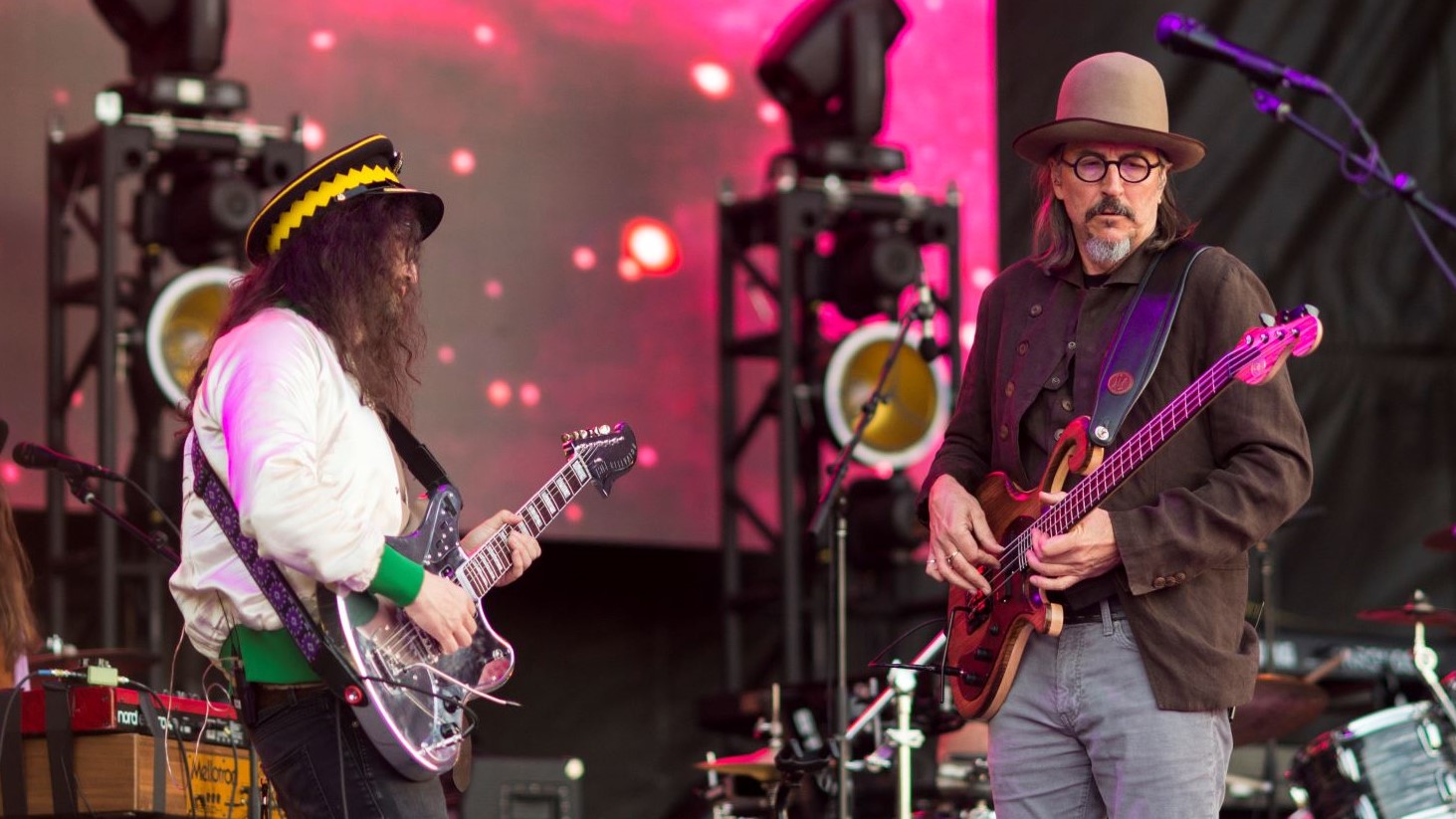
Claypool: I like getting a whole performance, because to me it just flows better. You get that emotion – you get that dynamic and continuity. I just like capturing the moment. I’m not one for comping together a solo. So in the studio I would push Sean. But I kind of push everybody.
Lennon: As far as how I approach my solos? I try to think of them melodically and as having a narrative that has a structure to it. I try not to start at 11. [laughs] But mostly I just try to think of a melody, because I’m not the most technical player. I’m not going to rely on some sort of athleticism, so I have to think of something that will sound musical in order to get me through to the other side.
You guys have now made two albums and an EP together. What is it about your dynamic together that works so well for the two of you?
Claypool: There’s a few things, but the best thing is the hang. Sean and I have a great relationship just as a couple of humans on the planet, you know? That’s where it really starts. Beyond that, we tend to make each other laugh and we tend to stimulate each other intellectually and musically. And we challenge each other. It’s also great to be in the studio with someone that has equally as much to offer lyrically and composition-wise. This is definitely the strongest collaboration I’ve ever had with another songwriter.
This is definitely the strongest collaboration I’ve ever had with another songwriter.
Les Claypool
How about you, Sean?
Lennon: Honestly, the best thing about working with Les is being able to sit around and hang out with him. He’s such a funny guy. And he takes me fishing. We went… what is it, crabbing? We went crabbing and got some king crab.
Claypool: We almost sunk!
Lennon: And the other thing I like is the shows. Playing with Les and this band is so different than any other band I’ve played with. It’s a different experience because I’m given different responsibilities that I’ve never really had before, especially in terms of playing so much lead guitar. Because in my own music there are never these long periods of improvisation. But sometimes Les will just point at me onstage and say, “All right, go for it!” Or sometimes he’ll just walk offstage. He’ll look at me and be like, I’m going to get some water, or something like that. And then I’ll be alone up there and have to improvise and come up with something cool to entertain people.
Les, you’ll really just walk off the stage and leave Sean there alone?
Claypool: Yes.
Why?
Claypool: Well, with Primus we have a lot of material; with Delirium, not so much. So there are a couple of songs where Sean starts with the little strummy-strum-strum thing, and I’ll just leave the stage and let him run with the ball for a little bit. Because he’s a very inventive guy. So he’ll come up with some cool shit.
Sean, how do you feel about that?
Lennon: At first it was really scary. But now it’s just exciting.
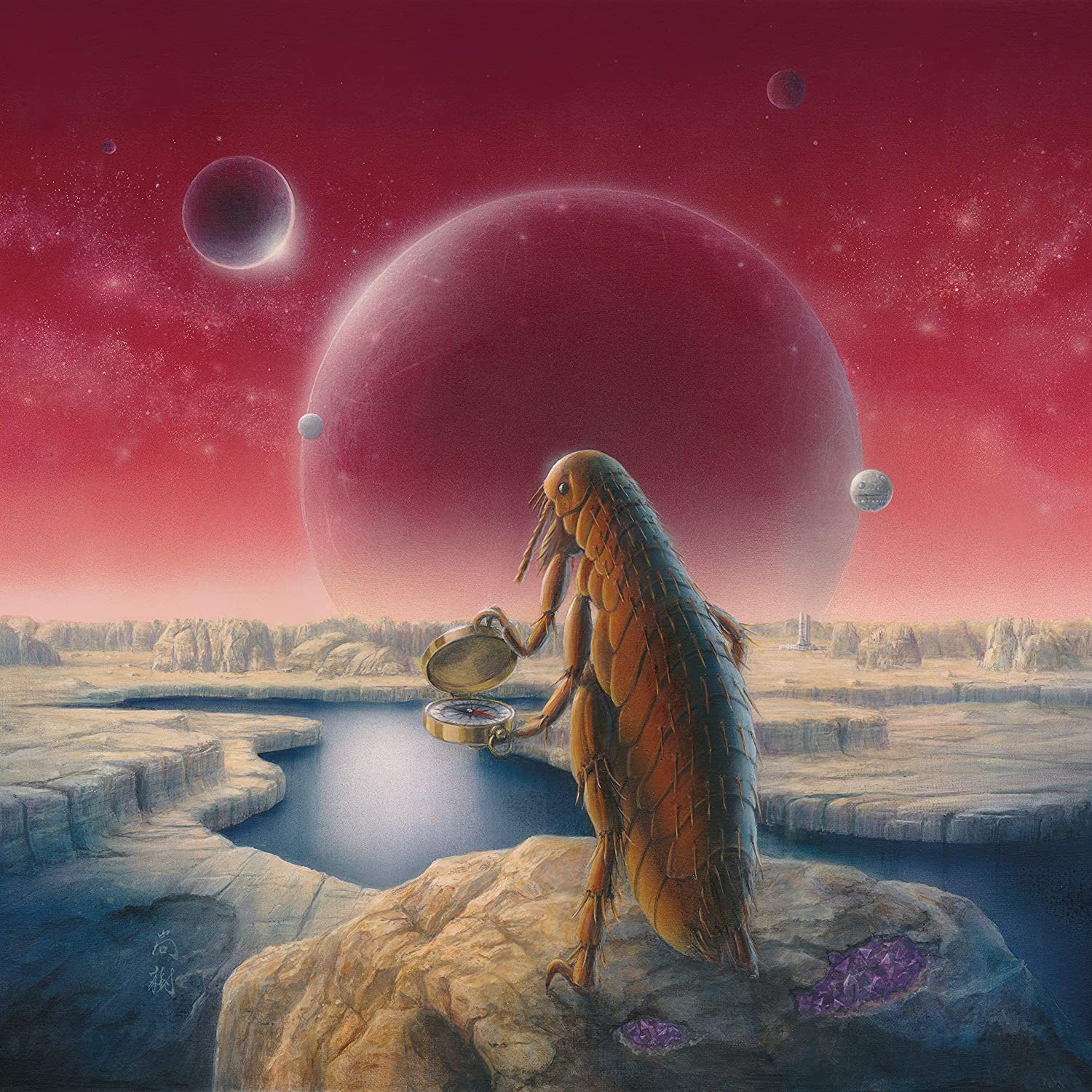
Browse The Claypool Lennon Delirium music here.
Get The Pick Newsletter
All the latest guitar news, interviews, lessons, reviews, deals and more, direct to your inbox!
Rich is the co-author of the best-selling Nöthin' But a Good Time: The Uncensored History of the '80s Hard Rock Explosion. He is also a recording and performing musician, and a former editor of Guitar World magazine and executive editor of Guitar Aficionado magazine. He has authored several additional books, among them Kurt Cobain: Montage of Heck, the companion to the documentary of the same name.
"Why can't we have more Django Reinhardts going, 'F*** everybody. I'll turn up when I feel like turning up'?" Happy birthday to Ritchie Blackmore. The guitar legend looks back on his career in an interview from our December 1996 issue
"Get off the stage!" The time Carlos Santana picked a fight with Kiss bassist Gene Simmons and caused one of the guitar world's strangest feuds
